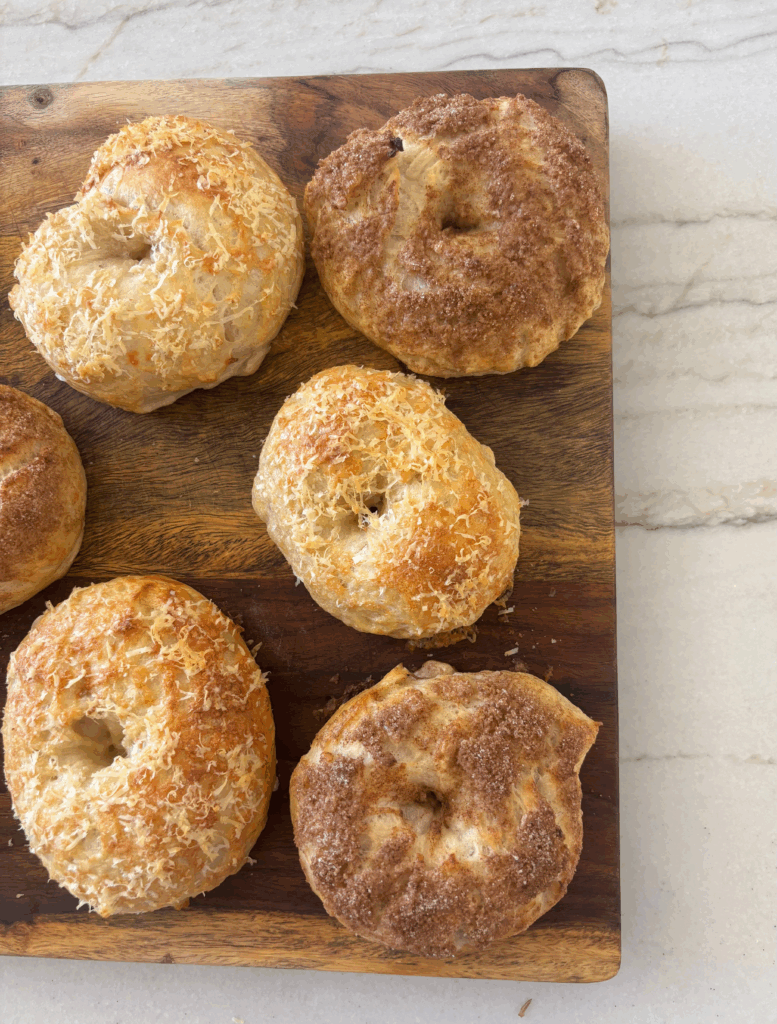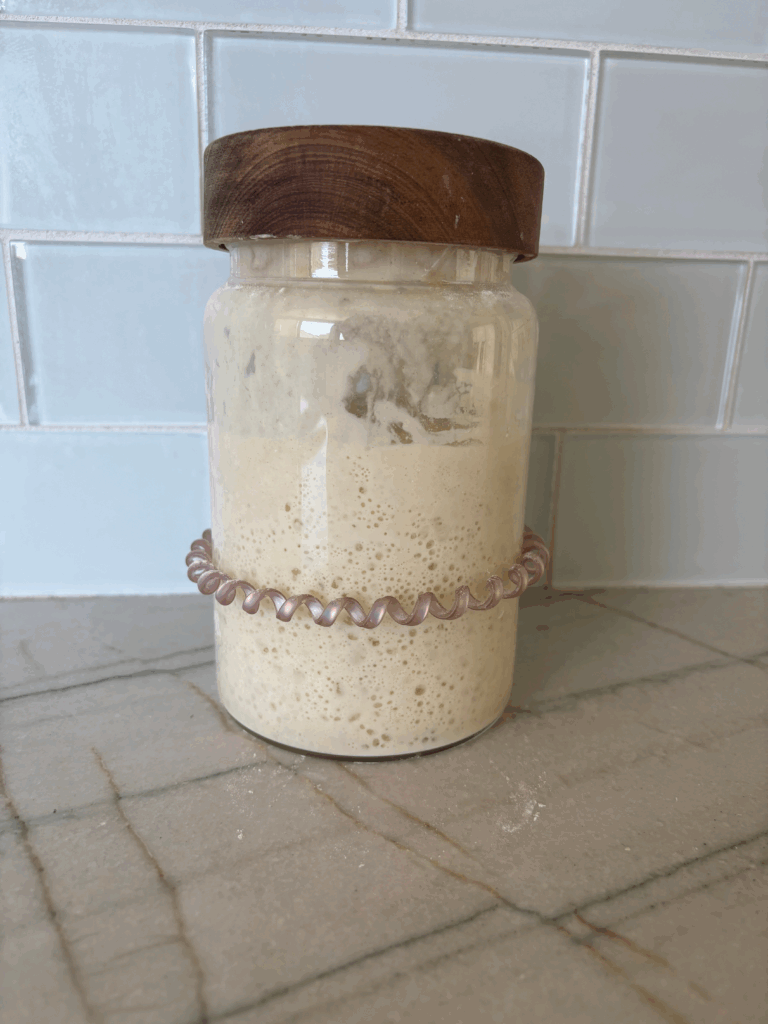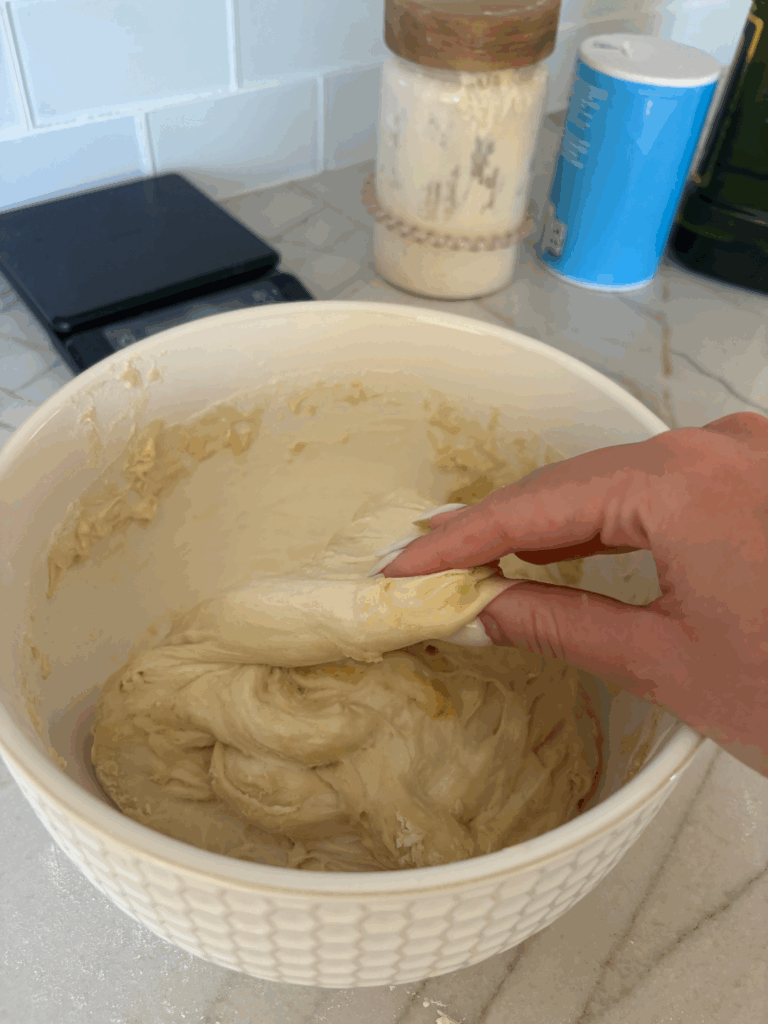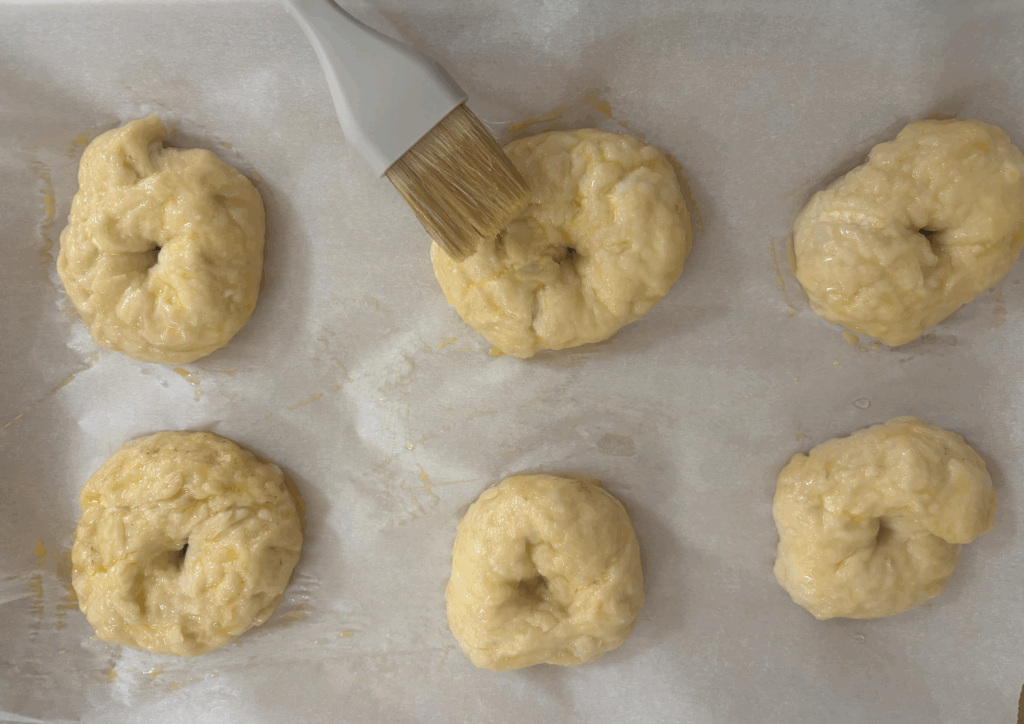
Why Sourdough?
With sourdough recipes trending on social media, sourdough has grown in popularity over the past few years. Sourdough is a bread that is created through a starter, which is a culture of healthy yeast and bacteria. The combination of water and flour fermenting produces lactic acid, acetic acid, and carbon dioxide. This gives the bread its famous sour flavor. The fermentation is a slow process, taking about 1-2 days for a loaf of bread. This slow process grows healthy probiotics that help with digestion. In addition, sourdough has a lower glycemic index than other breads since the fermentation makes starch less available. Sourdough is super fun to make at home, and taste even better than loafs you buy at the store! Homemade sourdough only has a few ingredients: salt, starter, flour and water!
Visit https://communityhealth.mayoclinic.org/featured-stories/sourdough-bread-benefits for more information on sourdough and its health benefits.
What Got Me into Sourdough
When I was in college, I was in a beginner’s nutrition class and my professor mentioned how sourdough has a slightly different taste in different areas of the world. This is because different environments have different bacteria, which affect the taste of sourdough. Hence why San Francisco sourdough may taste different than if I were to make the same recipe in my home here in Arizona! As a student, this amazed me. My brother already knew about baking sourdough, so I reached out to him and he walked me through the basics of learning about making my own sourdough. Now there is no looking back!
Where to Get a Starter
To start, I think it is always fun to try to make your own starter. I tried making my own when I started my sourdough journey. It is fun for learning, but I struggled with keeping my starter active. From what I have heard, buying an already established starter makes the upkeep much easier, since the bacteria and yeast are already established. So I bought my starter on Etsy, and it has been wonderful! Now, whenever I cannot feed it every day, I can put it in the fridge. When I am ready to reactivate it for baking, I just pull it out, give it a few feeds and it’s ready to bake with!

What Does it Mean to “Feed” Your Starter
Since the starter is full of bacteria and yeast, it is a living thing. Because of this, to keep it active and bubbly, it needs to be fed every 12-24 hours when kept at room temperature. I keep mine in a jar without a neck to make it easy to feed and mix. I like to use about a 1:1:1 ratio of flour to water to starter. When it has been in the fridge for a while, I like to add a little more flour to help it bounce back. When feeding it, keep in mind that your starter will grow. Do not poor extra starter down the drain, it will clog. Either pour it in the trash or keep it in another jar as a discard for other recipes. Also, do not feed your starter bleached flour or use metal utensils to mix. It can destroy some of the bacteria and yeast, weakening your starter.
What Does the Stretch and Folds do?
When doing a stretch and fold, you are pulling one end of the dough up by about 5 inches and over towards the other side of the dough. Then you rotate the bowl and repeat this process. Normally, stretch and folds are completed in about 3 rounds. This helps strengthen the dough, improves the rise and allows for the bread to have a nice crumb.

What Does the Egg Wash Do?
This step is important for the outside part of the bagel. It gives the bagel a shiny golden crust. In addition, it helps toppings stick better to the bagels. To make the egg wash, whisk an egg with a fork.

Yummy Toppings I like to Use
- everything seasoning
- parmesan
- asiago
- cinnamon sugar
- poppy seeds
- sesame seeds
- cheddar
- garlic
Equipment I like to use:
- bread whisk
- baking sheet
- large pot
- mixing bowl
- scale
- tea cloth
- bench scraper
- I like to use a ladle that has holes in it for taking bagels out of water
Time Stamps I Use for this Recipe:
9:00 am: feed starter
1:00pm (once starter doubles) : mix dough
1:30pm: first stretch and folds
2:00pm: second stretch and folds
2:30pm: third stretch and folds
2:30pm: cover with damp towel for 4 hours
6:30pm: put into fridge for overnight
8:00am: Shape dough
8:00am: preheat oven, heat up water to boil, prepare toppings, and whisk egg wash
8:10am: boil each bagel for about 20 seconds on each side
8:15am: Brush each bagel with egg wash and add toppings
8:20am: bake for 25 minutes
PrintSourdough Bagels
- Yield: 8 1x
Ingredients
- 500 g bread flour
- 100g starter
- 345 g water
- 12g salt
- 10g olive oil
- 1 tbsp honey
- desired toppings
- 1 egg
Instructions
1. Feed starter 4-12 hours before prepping the dough
2. Once the starter doubles, combine salt, water, active starter, olive oil, and bread flour in a large mixing bowl. I like to mix with a bread whisk, but you can also use a fork or your hands
3. Allow to rest for 30 minutes with a damp tea towel covering the bowl
4. Perform a round of stretches and folds. To do this, grab one end of the dough and lift about 6 inches, and fold over towards the other side of the dough. Quarter rotate the bowl and repeat 3-5 times
5. Do a total of three rounds of stretches and folds, each 30 minutes apart. Make sure you cover the bowl with a damp towel between each round. Dough should feel elastic by the last round.
6. Cover the dough with a damp towel until it doubles. This typically takes me about 4 hours, and I keep my house between 70-75 degrees Fahrenheit. If your house is colder, this may take longer
7. Transfer the dough into the refrigerator to finish fermenting overnight
8. In the morning, take the dough out of the fridge. Roll the dough into 8 balls using your hands. Then take your thumb and press a hole into the middle of the ball. Then stretch outwards to make a bigger hole. Cover bagels with a damp towel during the next step.
9. Bring a pot of water and a tbsp of honey to a boil. Preheat oven to 435 degrees Fahrenheit. Prepare toppings and whisk an egg to create an egg wash
10. One water is boiling, place a bagel at a time into the boiling water. Boil on each side for about 20 seconds. Then remove the bagel from the water and transfer it onto a lined baking sheet.
11. Brush bagels with egg wash, then sprinkle chosen toppings onto the bagels
12. Bake for 25 minutes

